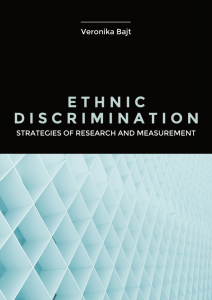
Book / Ethnic Discrimination: Strategies of Research and Measurement
The book presents in detail and critically evaluates different ways of “measuring” ethnic discrimination, breaking new ground in the field of empirical data collection on unequal treatment as well as addressing existing legislation and guidelines that require equality data to be able to provide a credible representation of the real situation in the society. It is the first book in Slovenia to focus in-depth on the methodology of audit studies or situation testing. Drawing on extensive empirical research on the experience of discrimination based on personal circumstances of ethnicity, skin colour, nationality, and religion, it is grounded in more than 800 survey responses, almost 800 discrimination tests, and more than 50 interviews. Discrimination is analysed in relation to different areas of life: employment and the labour market, healthcare, access to goods and services, the housing market, education, and administrative procedures. One of the findings is that unequal treatment is often accompanied by prejudices that influence discriminatory practices and inhibit equal treatment, as well as hate speech.
– First in-depth empirical and methodological study on ethnic discrimination in Slovenia
– Review of existing Slovenian and international research on discrimination and the existing legal framework both in Slovenia and at the European Union level
– Experiences of discrimination and consequences of discrimination
“As a society, we must confront the fact that people are still stopped on the streets because they look foreign, that the police are called to bars to verify the immigration status of guests, that people are subjected to verbal abuse and slurs on the streets, and that headscarves and certain surnames can lead to discriminatory treatment.” Roman Kuhar
“The book offers a unique and innovative perspective by presenting the first experiential analysis of this research method in Slovenian science, including insights into previously unknown aspects of the method. Other reports that present data obtained through situation testing tend to focus on the content of the data obtained, rather than on the deconstruction of the method itself. In contrast, this book delves into the details of the research method to provide a more nuanced understanding of its capabilities and limitations. This is the strongest point of the monograph, and its ability to engage and hold the attention of readers, even those who are well-versed in issues of equality, discrimination, and exclusion.” Neža Kogovšek Šalamon
